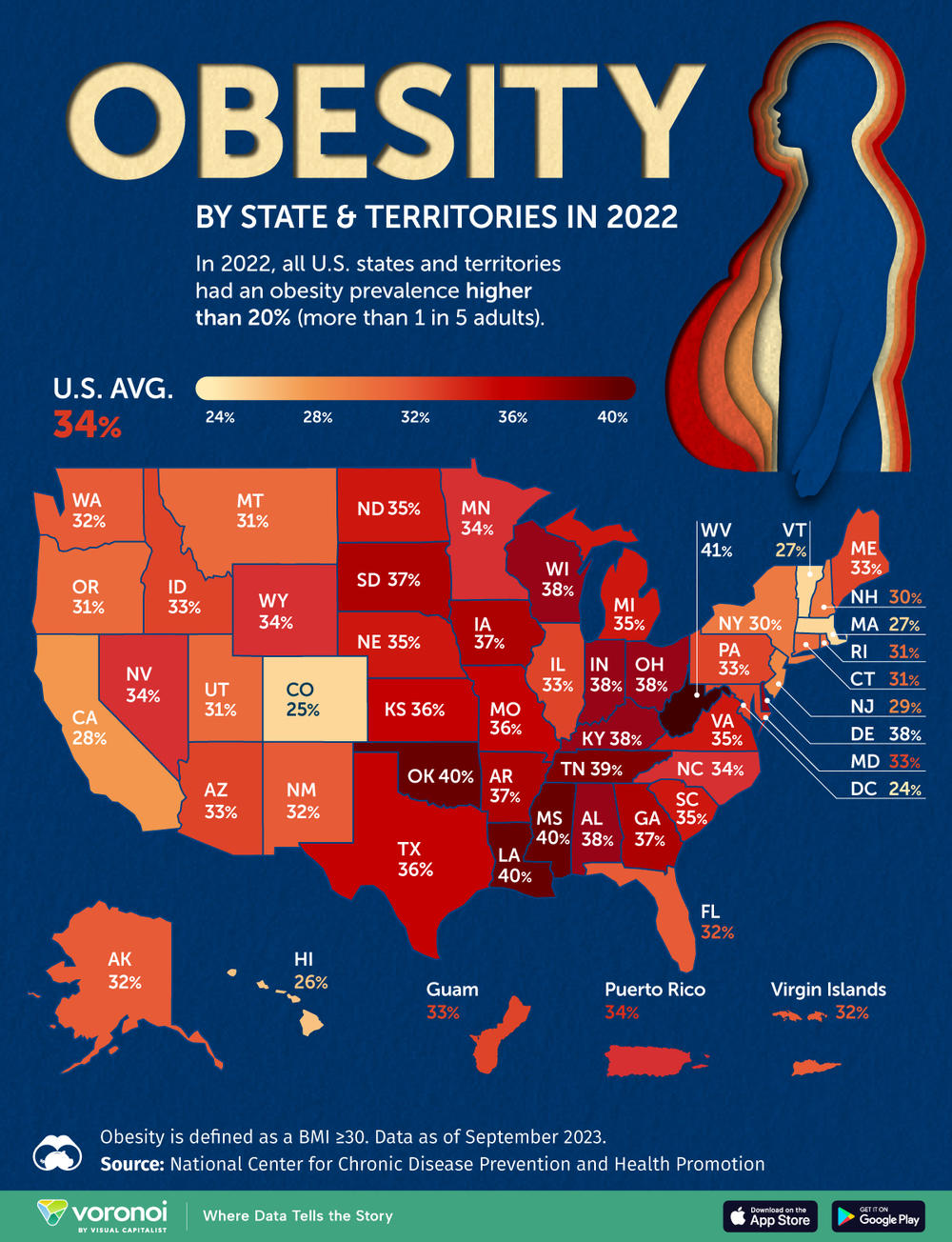
Section Branding
Header Content
As obesity rates rise, Georgia needs more funding for preventative programs, report says
Primary Content
LISTEN: A new report from Trust for America’s Health shows barriers to nutritious food and physical activity are driving up the rates of obesity in Georgia communities — especially among children. GPB’s Ellen Eldridge has more.

A decade ago, no state reported an obesity rate of more than 35%, but now the Centers for Disease Control and Prevention says there are 23 — including Georgia and several Southern states.
Almost 20% of American children ages 2 through 19 are considered obese, defined as having a body mass index (BMI) at or above the 95th percentile for age and sex, and rates for this age group have more than tripled, from 5.5 to 19.7%, according to the latest data from the National Health and Nutrition Examination Survey.
Policymakers must increase funding for proven obesity prevention programs, according a new report from Trust for America's Health (TFAH), a nonprofit, nonpartisan public health policy, research and advocacy organization.
Children with obesity are also at greater risk for certain diseases, like Type 2 diabetes, high blood pressure, severe illness from COVID-19, depression — and a child with obesity is more likely to have obesity as an adult, TFAH CEO J. Nadine Gracia said.
The report states that challenges in Georgia include access to health care, such as annual physicals with a pediatrician — and would be improved through Medicaid expansion.
Enabling Medicaid waivers to reimburse community-based organizations for chronic disease prevention programs would be another step.
"What we need to do, really, as a nation, is increase funding for those types of obesity-related programs — prevention programs that are proven to work," Gracia said. "Programs like the state Physical Activity and Nutrition Program."
- RELATED: Investment in early childhood mental health may reduce crime, boost national security, veterans say
Racial and ethnic approaches to community health programs have prevented and reduced obesity, Gracia said. But she said many people view obesity as an individual problem and not a public health problem.

"And many factors contribute to obesity, not only simply individual behavior, but ensuring that really the types of structures and conditions exist in communities that make healthy eating and physical activity accessible and affordable to everyone," she said.
Higher obesity rates exist among Black, Latino, and Native American populations, and Gracia pointed out higher rates of obesity in communities that have lower incomes as well as in rural areas.
She attributes the disparities to longstanding structural barriers that exist in many communities with higher rates of food insecurity, housing instability or among those whose jobs don't pay a living wage.
So it's important that we think about those types of structural barriers and recognize that those inequities also lead to fewer resources being available in communities to be able to have healthy eating and physical activity, Gracia said.

